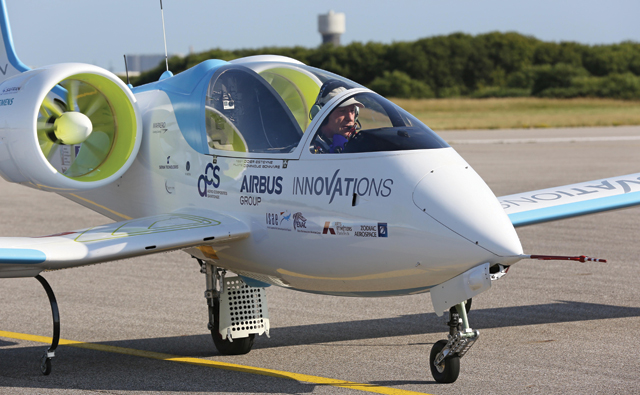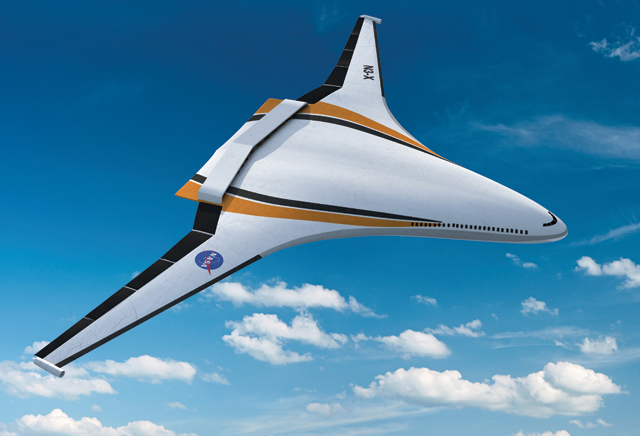If failing correctly can be considered a strategic business skill, Silicon Valley may have a lot to teach the aerospace industry – most recently Airbus Group.
Over the past five months, Airbus has sunk roots into the cultural heart of California’s booming high-tech economy, setting up a $150 million venture capital firm, launching a Defense Advanced Research Projects Agency (DARPA)-like technology incubator and poaching two of Silicon Valley’s elite entrepreneurs to run them.
Silicon Valley's new attraction for all three Airbus divisions goes deeper than the stream of innovative technologies and ideas flowing into the consumer electronics market. Airbus also wants to co-opt the way that Silicon Valley’s firms develop technology.
A key characteristic of the Silicon Valley model is how it deals with failure.

An E-Fan demonstrator flew across the English Channel to prove the potential of electric propulsion
Rex Features
“We’re really enamoured and excited about what’s happening in Silicon Valley,” says Ken McKenzie, deputy chairman and senior vice-president of strategy and corporate services for US-based Airbus Group Inc.
“It happens fast,” he says. “If it doesn’t work they move on to something else very quickly, instead of beating a dead horse for years before saying ‘this doesn’t work, so let’s shut down this multi-million-dollar project.’”
After Airbus Group chief executive Tom Enders made an exploratory visit in March, the company announced the formation of two new companies in late May. Airbus recruited former Google advanced projects and DARPA executive Paul Eremenko to a head the tentatively-named Innovation to Business centre – an incubator of very long-term technologies and concepts.
Tom Dombrowski, a veteran of the Andreessen Horowitz venture capital firm known for specialising in social media platforms, also has joined Airbus Capital Ventures, which will focus on investing in mature products.
Both Eremenko and Dombrowski are busy hiring staff and developing operational plans. The organisations should be established by October and the first funded projects should emerge by the end of the year, McKenzie says.
Some well-known Silicon Valley brands have already invested heavily in advanced aerospace companies, such as Google’s launch of the unmanned Project Wing package delivery service, and the acquisition of Vern Raburn’s high-altitude, solar-powered unmanned air vehicle called Solara. But Airbus has a different set of expectations for its Silicon Valley ventures.
“In our Silicon Valley initiative, I don’t expect to see a single new [manned] airplane ever come out of it,” McKenzie says. “What I do expect are [new ideas like] connected cabin, UAVs. You can do fast-fail for UAVs. You do those quickly and innovatively while using some of the disciplines from airplanes and helicopters, but not tainting it so much that we need to get this Six Sigma-level [quality] before we can let this thing fly. We can just give it a try.”
Speaking to Flightglobal at the Experimental Aircraft Association's AirVenture fly-in in Oshkosh, Wisconsin, McKenzie compared the Silicon Valley method to the community that builds aircraft kits and new designs at their homes. The goal of the Airbus Innovations office – managed by chief technical officer Jean Botti – is to take a similar approach with its own portfolio, but that requires a sharp break with current practice.

Nasa's N3-X concept used a blended-wing body and gas turbines
NASA
“We’re very staid,” McKenzie says. “We come up with the design, we come up with the strategy, then come up with the project management, go through all the gates, and eventually by the time you put it out there the need for it is gone and your competitors are so far [ahead] that you’re dead in the water with some of these new ideas.”
The Silicon Valley initiative follows a string of external investments by Airbus in cutting-edge aerospace technologies, including a partnership to help Aerion develop a supersonic business jet. Another such project, the Airbus-branded Perlan II, was on display at the AirVenture event. The Perlan team is seeking to shatter the high-altitude record for glider flight, soaring to higher than 90,000ft using a mysterious weather phenomenon called the polar night jet.
It may seem unusual that Airbus is investing in an unpowered, high-altitude glider – but there is a strategy, McKenzie says. Airbus Defence & Space has interests in suborbital spaceflight, and also in the very long-term in the exploration of Mars.
“At 100,000ft [above Earth] you’ve got the same atmospheric conditions as Mars,” he says. “You think we’re going to drive around [Mars] in rovers? Or are we going to fly? We think we’re going to fly. So we have a project that we’ve worked on, which is a spaceplane. And now we can actually test stuff, because we can put it on the Perlan. They’re all excited because they’re getting the record. We’re all excited because we’re proving the concept.”
Airbus is not the first aerospace company to take notice of Silicon Valley’s innovation prowess. In 2011, Boeing Military Aircraft chief executive Chris Chadwick talked about leveraging Apple’s innovative product development process to design the next fighter or trainer.
But Airbus is the first to physically set up shop in Silicon Valley – a move that fits in with the company’s greater openness to external ideas.
“On the one hand, Airbus gets better leverage, a broader portfolio and less risk,” says Teal Group vice-president and aerospace consultant Richard Aboulafia. “On the other hand, the history of identifying promising technology is not good. I have three words for you: Connexion by Boeing.”
Source: Flight International



















